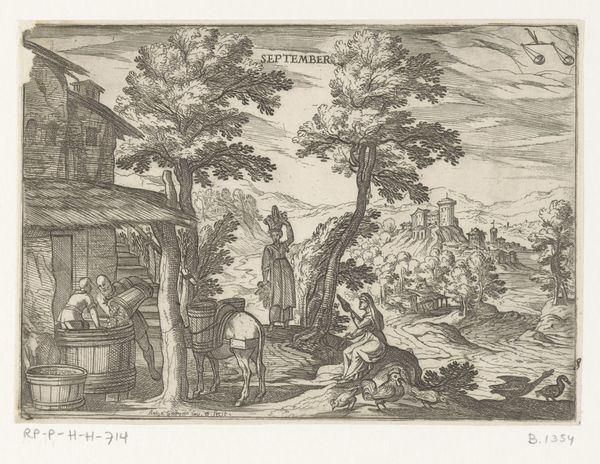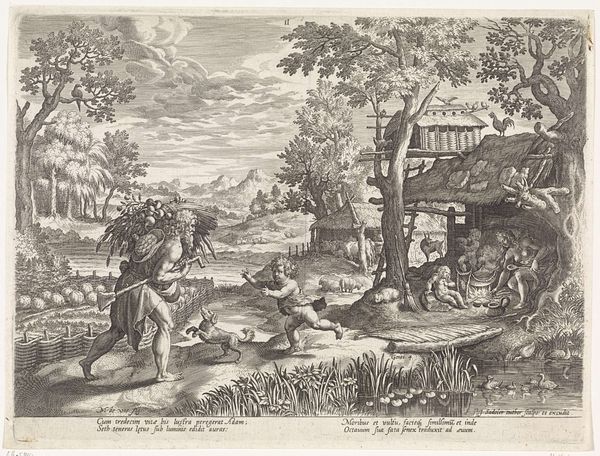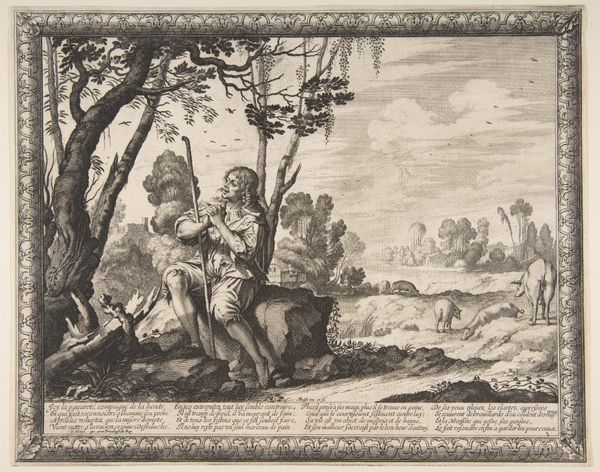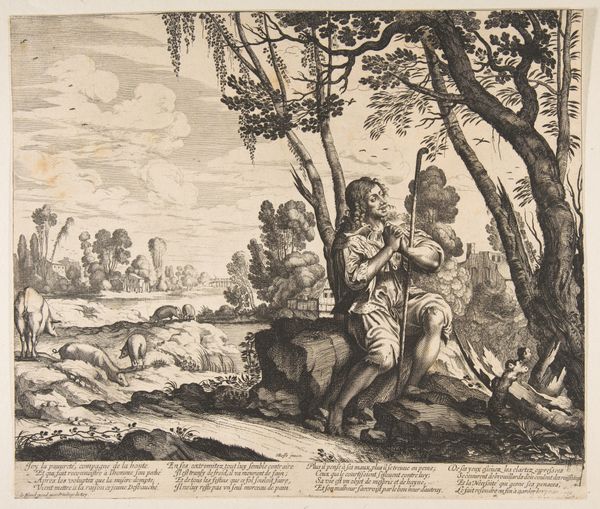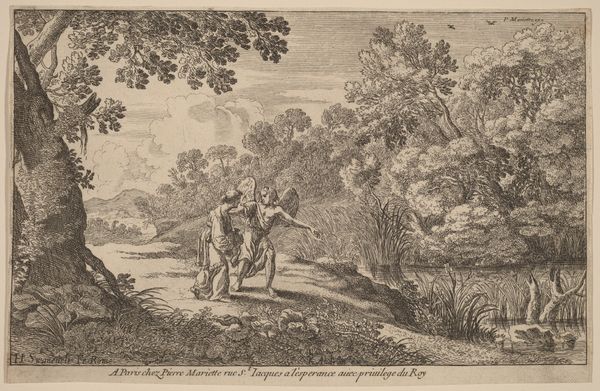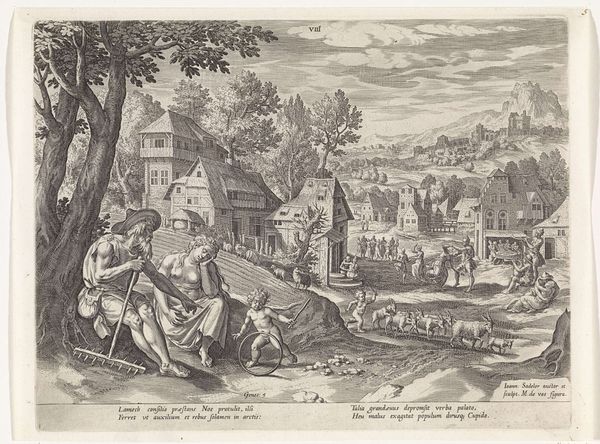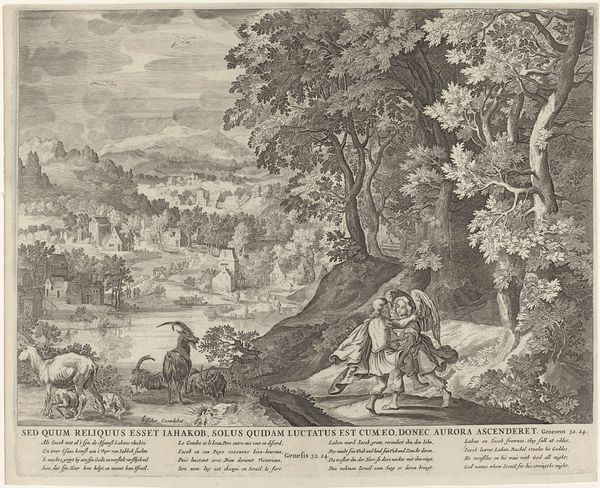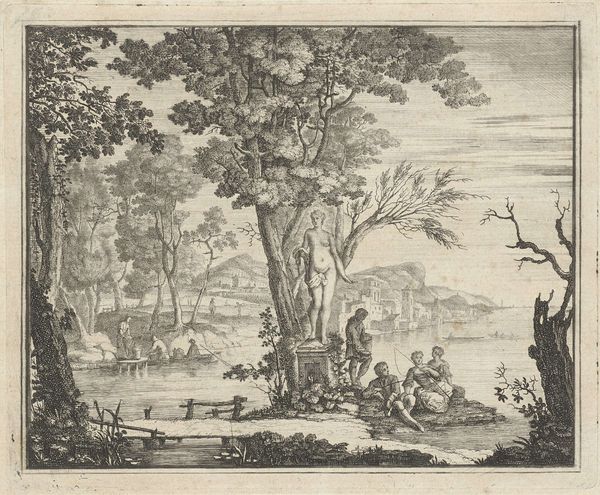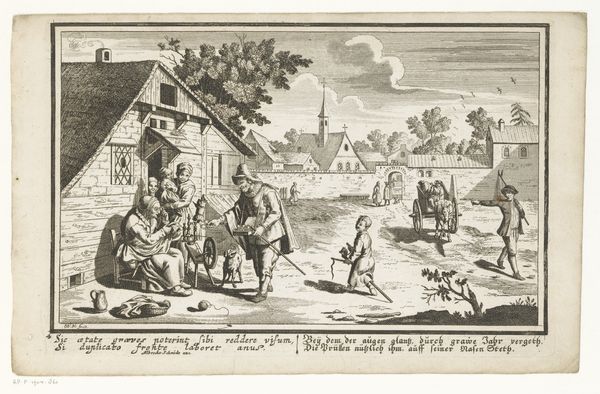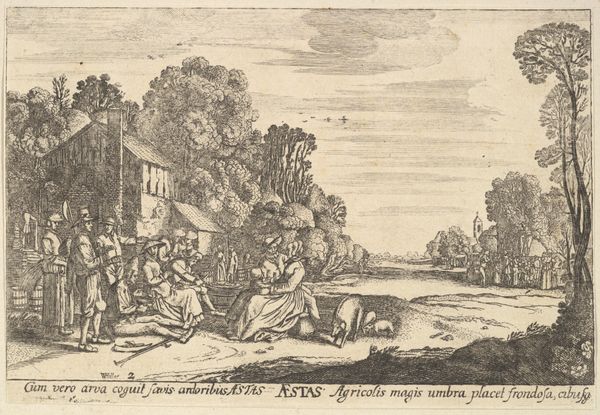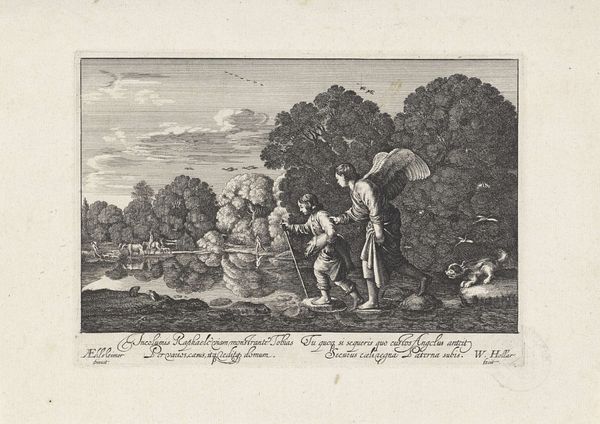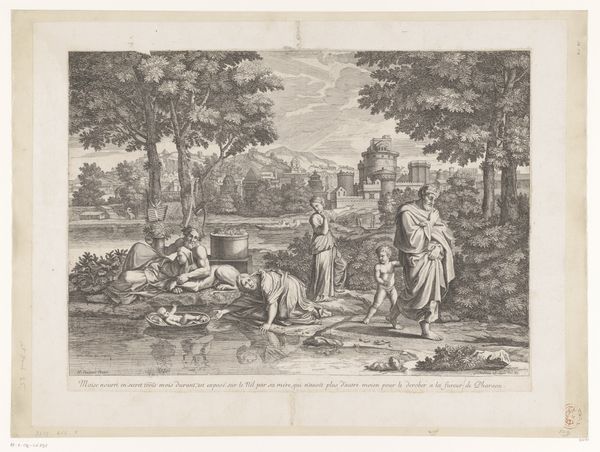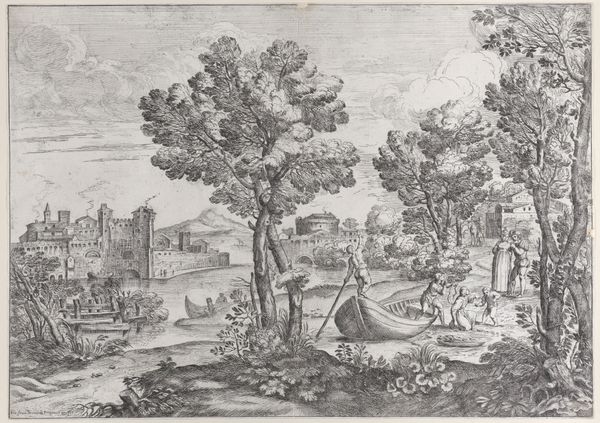
print, engraving
#
ink drawing
#
baroque
# print
#
old engraving style
#
landscape
#
figuration
#
history-painting
#
northern-renaissance
#
engraving
Dimensions: 405 mm (height) x 522 mm (width) (bladmaal)
Salomon Savery made this print, Pilgrims to Emmaus, sometime in the 17th century. The image is an engraving, meaning that the design was incised into a metal plate, likely copper, and then printed. The material quality of the print, its fine lines and tonal variations, all depend on the engraver’s skill. The engraver would have used a tool called a burin to carve the image into the metal. This was a highly skilled practice that required years of training to master. Each line has to be carefully considered, because unlike drawing, there’s no going back. Once a line is cut, it’s there for good. When we consider that each impression of the print also involved labor - inking the plate, running it through a press - we understand that images like these were the products of a complex, calibrated workshop process. So, while Pilgrims to Emmaus may seem simple, it's important to remember the amount of work involved in its production. This labor deserves our attention, just as much as the artistry.
Comments
No comments
Be the first to comment and join the conversation on the ultimate creative platform.
